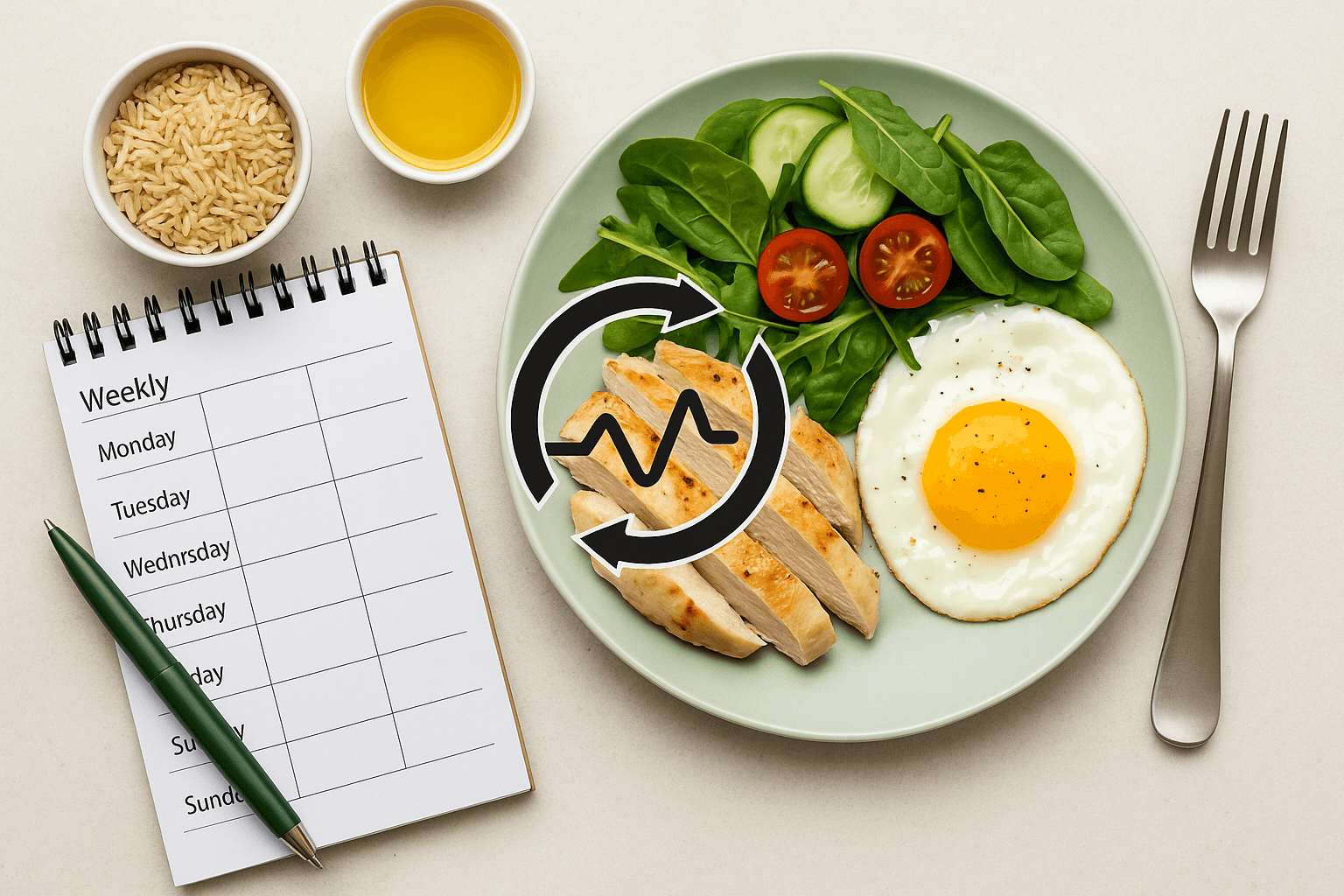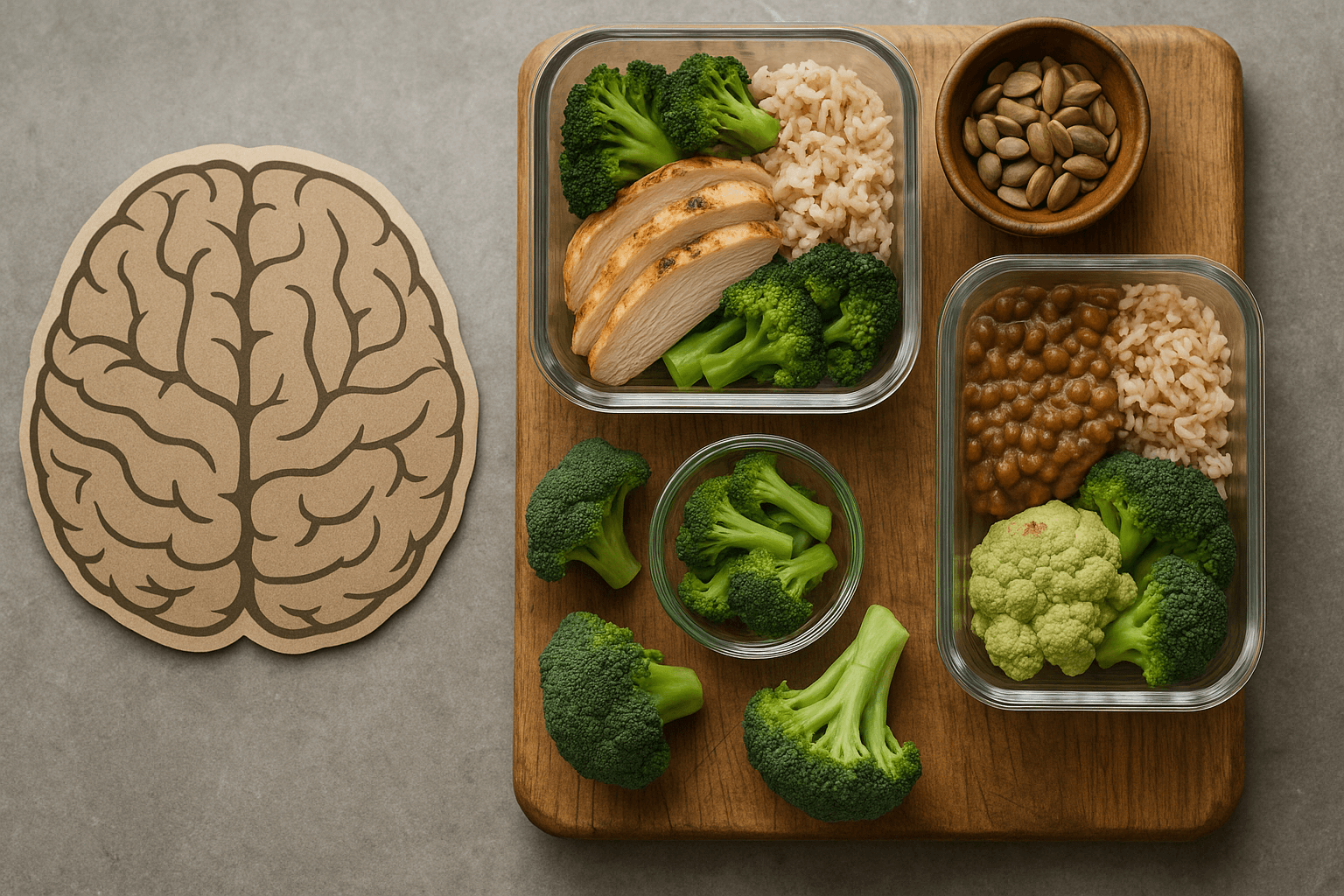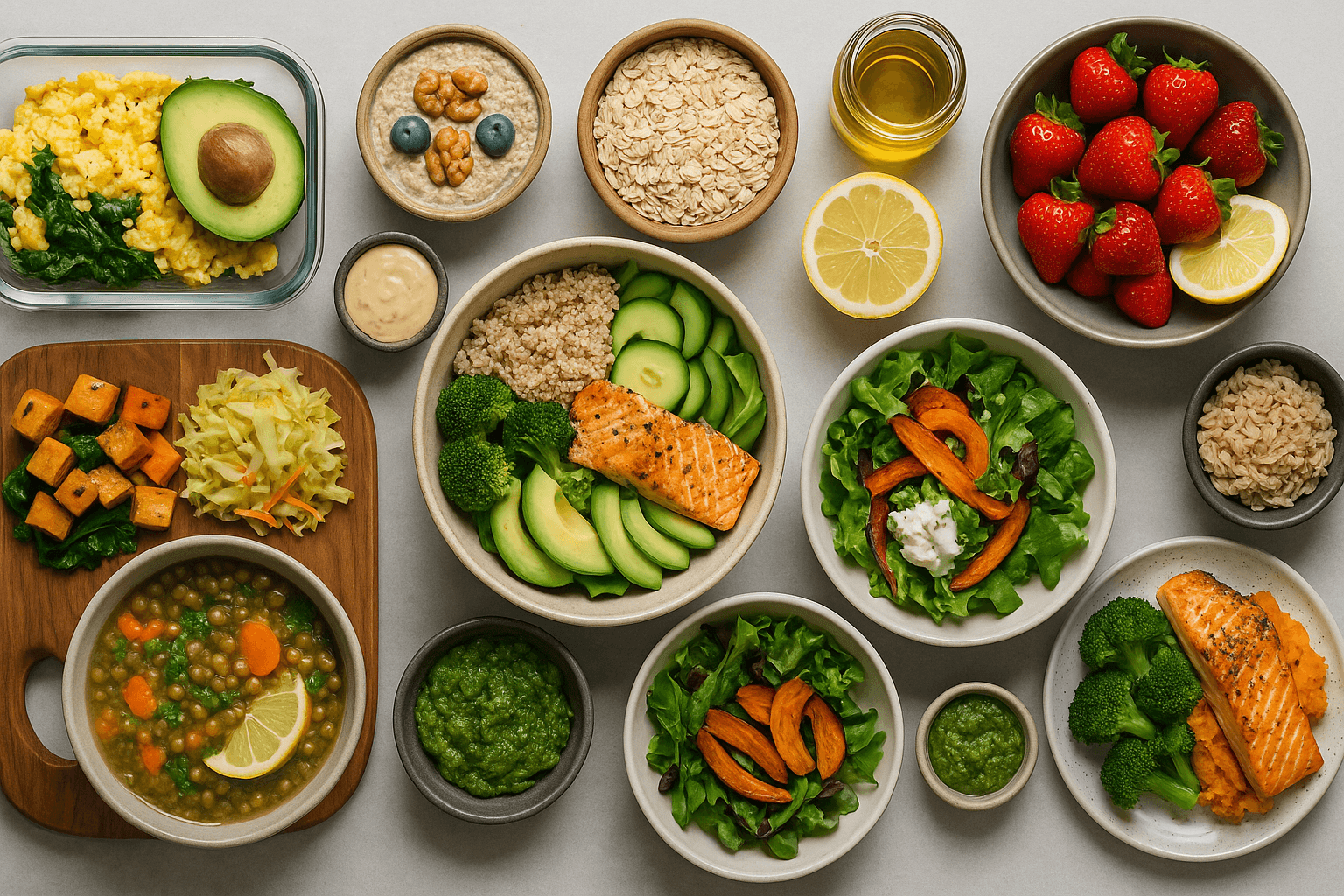Meal Planning + Blood Sugar Rhythm
Published on May 29, 2025

Meal plans tend to disintegrate after day three. Why? Because most plans are designed for perfection—not real life. But blood sugar doesn’t need perfect meals. It needs something consistent. A reliable structure. A rhythm your body can trust.
Whether you’re aiming to avoid energy crashes, manage prediabetes, or just feel more steady throughout the day, this guide gives you real-world frameworks for sustainable eating. The focus? Meals that are delicious, satisfying, and easy to repeat.
In this guide, you’ll learn:
Why stable rhythms beat strict diets
The 3-day anchor system for success
A full week of meals with flex options
How to build blood sugar-safe snacks
Why meal timing matters
Grocery strategies to ease decision fatigue
Why Rhythm Is Better Than Restriction
Your body thrives on rhythm. Blood sugar stabilizes when meals:
Occur at consistent times each day
Follow a repeatable structure (protein + veg + fat)
Avoid extremes like skipping meals or constant grazing
When you skip meals or snack endlessly, you risk:
Spikes and crashes in blood sugar
Overproduction of insulin
Cravings, fatigue, and brain fog
Instead, aim for:
3 main meals spaced 4–6 hours apart
Optional snack only when truly hungry
No food 2–3 hours before bed
The 3-Day Anchor Meal Strategy
Ditch the 7-day meal plan with 21 unique recipes. Instead, use 3 anchor days:
Day A, Day B, and Day C
Repeat and remix them across your week
This approach:
Reduces decision-making
Simplifies shopping
Supports digestion and glucose adaptation
Day ABreakfast:
Scrambled eggs + sautéed spinach + ½ avocado
Herbal tea or black coffee
Lunch:
Grilled chicken salad: arugula + lentils + tahini + lemon
Sparkling water with citrus
Dinner:
Salmon + roasted carrots + garlic broccoli
Olive oil drizzle + sea salt
Snack (optional):
Boiled egg + cucumber + olive tapenade
Day BBreakfast:
Coconut chia pudding + berries + cinnamon
Green tea
Lunch:
Turkey burger (no bun) + roasted sweet potatoes + kale salad
Ginger-mint tea
Dinner:
Tofu stir-fry with mushrooms, cabbage, sesame oil
Side of cooked wild rice
Snack (optional):
Handful of walnuts + 1 boiled beet
Day CBreakfast:
Cottage cheese + flaxseed + blueberries
Black coffee or mushroom coffee
Lunch:
Lentil soup + chopped arugula + olive oil drizzle
Slice of seed bread (optional)
Dinner:
Baked chicken thighs + cauliflower mash + green beans
Lemon zest and herbs
Snack (optional):
Greek yogurt + tahini swirl + cacao nibs
Weekly Plan Using Anchors
Monday: Day A
Tuesday: Day B
Wednesday: Day C
Thursday: Day A (swap dinner)
Friday: Day B (swap lunch)
Saturday: Day C (alternate breakfast)
Sunday: Flexible/leftovers
Meal planning is about rhythm, not variety.
Building Blood Sugar-Friendly Snacks
Use this simple formula:
Protein or fat + fiber-rich plant
Examples:
Boiled egg + cherry tomatoes
Sardines + rice cakes
Almonds + ½ apple
Celery + nut butter
Coconut yogurt + chia seeds + cinnamon
Avoid “naked carbs” like fruit alone, crackers, or juice—they spike blood sugar.
Timing Is Everything Blood sugar is influenced by when you eat, not just what you eat.
Key timing strategies:
Eat within 90 minutes of waking
Avoid eating 2–3 hours before bed
Front-load your calories: bigger breakfast/lunch, lighter dinner
Add a short walk after meals to boost glucose clearance
Insulin sensitivity is highest earlier in the day—leverage it.
Grocery Strategy for Anchor Planning Buy for patterns, not for recipes.
Proteins:
Chicken, turkey, eggs, salmon, tofu, Greek yogurt, lentils
Veggies:
Leafy greens, broccoli, cauliflower, carrots, cucumbers
Fats:
Olive oil, tahini, avocado, coconut milk, nuts, seeds
Smart carbs:
Sweet potatoes, berries, quinoa, wild rice
Extras:
Lemon, vinegar, herbs, spices, ginger, garlic
Meal prep tip:
Batch cook 2 proteins + 2 veggies + 1 carb every Sunday.
Add-On Strategies for Real Life Planning has to match reality. Life includes travel, long workdays, kids, and partners.
Travel:
Pack non-perishables: jerky, nut butter packets, protein bars, roasted chickpeas
In airports: look for boiled eggs, cheese sticks, veggie packs, tuna pouches
Hydrate more (3–4L) to offset travel stress
Workdays:
Pack lunch the night before
Keep desk snacks: nuts, olives, electrolyte packets
Stretch or walk for 5–10 minutes post-lunch
Family Meals:
Use anchor meals, customize toppings or carbs for others
DIY bowl, taco, or stir-fry nights = flexibility
Get kids involved in prepping and plating
Meal planning works better when it adapts, not when it resists your life.
Meal Planning Myths That Keep You StuckMyth 1: It’s too complicated
Truth: Simplicity wins—rotate a few reliable meals instead of creating 21 new ones each week
Myth 2: You need fancy recipes or tools
Truth: A knife, a pan, and some containers are all you need. Frozen veggies and canned fish count too
Myth 3: If you fall off, you failed
Truth: Planning is a compass, not a cage. Reset at the next meal—not next Monday
Myth 4: Meal plans are only for weight loss
Truth: They benefit mood, digestion, hormones, energy, and blood sugar—not just the scale
Ditch perfection. Keep what works. Let go of what doesn’t.
Final Thoughts The goal isn’t to eat perfectly. It’s to eat predictably.
Rhythmic meals stabilize energy, reduce cravings, and restore mental clarity.
Meal planning is about design, not recipes.
Design your week with rhythm—and your blood sugar will follow.
Start with 3 anchor days. Rotate. Adjust. Repeat.
Repetition builds stability. And stability builds health.








